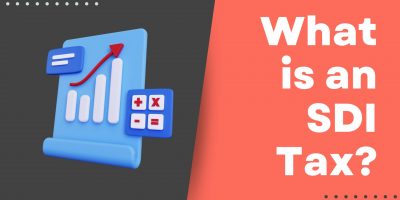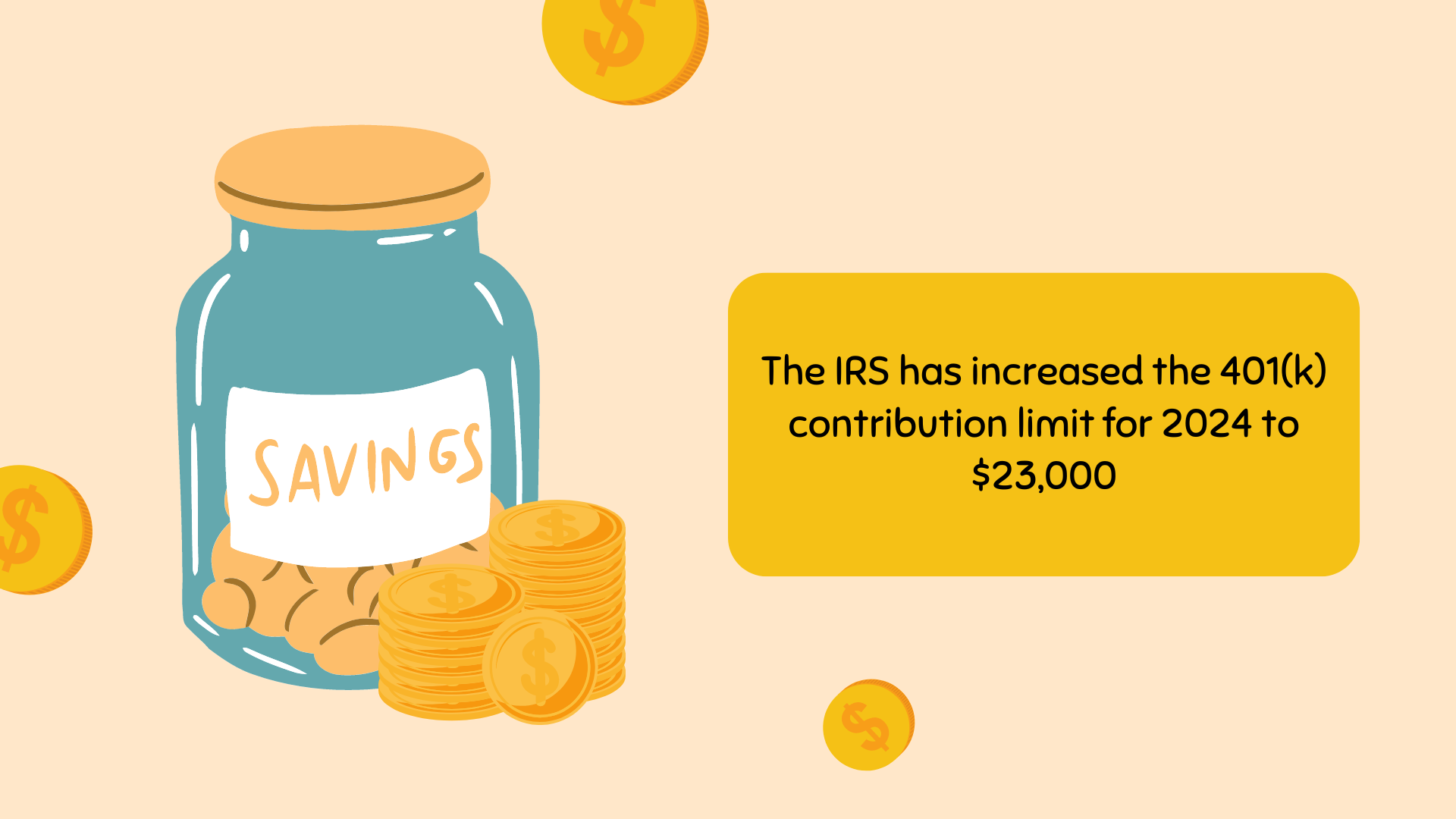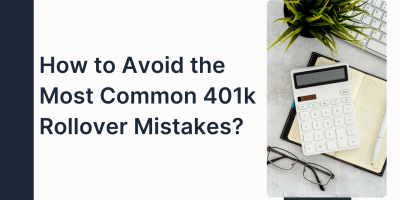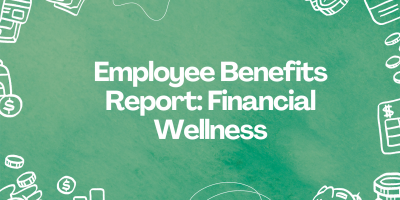
What is an SDI Tax?
Gain knowledge of state disability insurance tax. Discover the different rates and types of SDI tax plans and how they can impact you.


CFP, President of Croak Capital

CFA, Chief Executive Officer of BlueSky Wealth Advisors

CEO & Founder of Fig Loans
In a move designed to increase individual retirement savings, the IRS has increased the 401(k) contribution limit for 2024 to $23,000, up from $22,500 the previous year. While it’s too soon to predict future trends, experts anticipate the limit may grow by another $1,000 in 2025.
These continuous adjustments should give workers more financial flexibility and security in retirement.
But have they achieved their goal?
Below, we examine the 2024 401(k) contribution limits and get experts’ perspectives on how these adjustments shape outcomes for employees, employers, and the broader economic landscape.

A 401(k) is an employer-sponsored retirement savings plan that provides workers with a tax-advantaged way to save for retirement.
Employees can contribute a portion of their pre-tax salary, reducing their taxable income, with annual limits and catch-up options for those 50 and older.
Employers can match these contributions up to a specified limit or make non-elective contributions, which they pay directly to the retirement plan regardless of employee participation.
This retirement plan has many intricacies, and below, we answer the most frequently asked questions to provide a better overview.
A 403(b) plan is for nonprofit and certain government employees, while a 401(k) is for private-sector employees.
If an employer offers a match for 401(k) contributions, those contributions don’t count toward the employee’s limit. However, both contributions can’t exceed the combined IRS limit.
The longevity of a 401(k) depends on withdrawal rates, investment returns, and the remaining balance, thus emphasizing the need for strategic financial planning.
Typically, no, but there are some exceptions. If employees do cash out, they may face significant taxes and penalties. For example, those aged under 59½ will likely incur a 10% early withdrawal penalty on top of paying taxes on their cashout.
Yes, a 401(k) can be used for a first-time home purchase, but it may involve a loan or withdrawal with potential penalties and taxes.
There are different ways to protect a 401(k) from market crashes, from diversifying investments to rebalancing the portfolio.
Consultation with financial or investment advisors can further secure the investment strategy and ensure it aligns with long-term financial goals and risk tolerance.
As of 2024, the IRS’s 401(k) contribution limit has risen to $23,000.
The sum increased from $22,500 a year prior, while the catch-up contribution limit for employees over 50 remained the same at $7,500.
This allows 401(k) participants aged 50 and older to contribute up to $30,500 to their savings account. The same applies to 403(b) plans, most 457 plans, and the federal government’s Thrift Savings Plan.
By adjusting the limits, the IRS aims to increase retirement savings opportunities while reflecting on the recent cost-of-living changes.
The increase in limits aligns with recurring 401(k) trends.
“Historically, the 401(k) contribution limits have risen incrementally, often by about $500 each year,” explains Eric Croak, CFP and President of Croak Capital.
“Take, for instance, 2017, when the contribution limit was $18,000, and the maximum catch-up contribution was $6,000.
Since then, the contribution limits for employees have generally increased by about $500 per year.”
As these annual adjustments unfold, they carry significant implications for employees, employers, and the broader economy. The latest 2024 401(k) contribution limits shape how individuals save for retirement and influence various financial stability and economic growth aspects.
Initially, there is a positive impact on employees and their retirement prospects, or at least for those who can afford to invest more of their salaries in their accounts.
Eric Croak believes that the IRS’s decision, though less than the nearly 10% limit increase from last year, will still help employees maintain their upward momentum in increasing their savings.
Adding to this perspective, David Blain, CFA, and Chief Executive Officer at BlueSky Wealth Advisors, offers his observations on the benefits of these incremental changes.
“As a financial advisor, I have seen how increased contribution limits positively impact my clients’ savings behavior and financial planning. Higher limits allow individuals to accelerate their retirement contributions, gain additional tax advantages, and catch up on savings later in their careers,” says Blain.
“For example, a client maximizing the new $23,000 401(k) limit could save over $5,000 in taxes while adding $23,000 to their retirement balance. The additional compounding returns over decades of saving and investing can amount to a significantly larger balance.
For older individuals, higher catch-up contribution limits enable greater contributions later in their careers to compensate for lost time or meet their retirement goals. A 55-year-old client contributing an additional $7,500 to their 401(k) this year could see that amount grow to over $30,000 in 10 years, assuming a 7% return.”
However, this is assuming employees can match the contribution limits.
While the increase has received many positive reactions, some criticism has arisen regarding its impact on lower-income workers.
Critics argue that these higher limits primarily benefit higher-income individuals who are more likely to be able to contribute the maximum amount.
At the same time, those with lower incomes may struggle to increase their contributions, potentially exacerbating retirement savings inequality.
From an employer’s perspective, the increasing 401(k) contribution limits in 2024 can be beneficial and challenging.
On the one hand, offering a 401(k) plan with higher contribution limits and matching them can be a competitive advantage in attracting and retaining talent. The workforce might appreciate the opportunity to save more for retirement, which can help alleviate some of the employee’s financial stress.
“This move indicates that more employers are starting to view financial well-being as an integral part of total well-being and are incorporating it into holistic wellness strategies to encourage a healthier, more productive workforce,” concludes Eric Croak.
However, they must also stay vigilant about these changes.
While the direct financial impact on employers might be minimal, increasing contribution limits requires careful management to maximize the benefits for all parties.
Collaborating with proactive 401(k) providers to adjust company-sponsored plans and match contributions can simplify the administrative process and ensure a smooth transition.
Finally, what potential effects could the 2024 401(k) contribution limit increase have on the broader economy?
Higher individual retirement savings can lead to increased financial stability for retirees, which in turn can reduce dependence on government programs.
At the same time, capital accumulation rises as more funds flow into 401(k) plans, leading to greater investment in the economy and supporting overall economic growth.
CFA David Blain asserts that rising contributions to retirement plans could stimulate long-term market investment, promote economic growth, and improve financial stability for the elderly.
“Increased retirement plan contributions provide capital markets and the broader economy with a stable source of long-term investment. The money individuals add to their retirement accounts is invested in stocks, bonds, mutual funds, and other securities that fund businesses, job growth, and innovation.
A steady flow of retirement contributions, especially at higher levels, supports the continued growth of investment markets and economic activity.”
It seems that increased 401(k) contribution limits could substantially impact the economy. However, it’s also vital to consider the potential challenges that may arise from these changes and how to tackle them for long-term efficiency.
The current regular annual growth has intensified an existing challenge.
While the increased limits offer the potential to generate wealth through tax-deferred savings, which sounds great in theory, they could inadvertently widen the gap between high and low-income earners.
In other words, higher-income workers are more likely to take full advantage of these increased limits, potentially leaving those in lower-income brackets even further behind.
Employers are facing their own set of challenges, too.
Handling the new, higher contribution limits could complicate payroll systems and ramp up administrative costs.
Additionally, companies that provide contribution matches might see increased expenses if employees take full advantage of this, which could impact their overall compensation strategy or benefits structure.
So, while the goal is to help people save more for retirement, balancing the 2024 401(k) contribution limit increase with the needs of both employees and employers requires careful consideration and a solution that ensures minimal disruptions.
Strategic financial planning could be a feasible solution to tackle the ongoing and future limit changes, ensuring everyone stays on track with their financial goals.
For individuals, it means finding the right balance between saving more for retirement and managing day-to-day expenses. Proper planning can turn the new contribution limits into a real benefit, allowing people to boost their retirement savings without unnecessary stress.
For employers, it’s about adjusting budgets and benefits plans to handle the changes smoothly.
Jeffrey Zhou, CEO and Founder of Fig Loans believes this can lead to a more financially stable and prepared population.
“My personal savings patterns will significantly shift toward more aggressive long-term financial planning due to higher contribution limits.
I will likely prioritize maximizing my retirement account contributions to take full advantage of the tax benefits and growth potential. This approach encourages me to think more strategically about my financial future, focusing on stable and secure investments.
Enhanced financial planning will foster a more disciplined saving habit, reducing my reliance on short-term spending.”
Through concise planning, employees and employers can effectively navigate the 2024 401(k) contribution limits and all upcoming changes, ensuring they’re set up for long-term financial success.
Disclosure: Some of the products featured in this blog post may come from our partners who compensate us. This might influence the selection of products we feature and their placement and presentation on the page. However, it does not impact our evaluations; our opinions are our own. The information provided in this post is for general informational purposes only and should not be considered as legal, tax, accounting, or investment advice. For advice on specific issues, please consult with a qualified professional.
Content Writer at Shortlister
Browse our curated list of vendors to find the best solution for your needs.
Subscribe to our newsletter for the latest trends, expert tips, and workplace insights!

Gain knowledge of state disability insurance tax. Discover the different rates and types of SDI tax plans and how they can impact you.

Just switched jobs? What you do with your 401(k) next could either save or drain thousands from your retirement.

In an era where 60% of Americans live paycheck to paycheck, companies are increasingly recognizing the urgent need for comprehensive financial wellness programs.

From uncovering new qualified leads and creating meaningful relationships with prospects to driving more sales, learn how intent data is a cutting-edge tool for an effective sales strategy.
Used by most of the top employee benefits consultants in the US, Shortlister is where you can find, research and select HR and benefits vendors for your clients.
Shortlister helps you reach your ideal prospects. Claim your free account to control your message and receive employer, consultant and health plan leads.